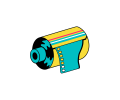The Timeless Charm of Analog Film Cameras: A Comprehensive Guide
In an era dominated by digital technology, the allure of analog film cameras remains as strong as ever. For photographers seeking a unique and nostalgic experience, shooting with film offers a sense of artistry and craftsmanship that is unmatched by digital alternatives. In this guide, we’ll explore the timeless charm of analog film cameras, the different types available, their features, and why they continue to captivate photographers around the world.
What are Analog Film Cameras?
Analog film cameras, also known simply as film cameras, are photographic devices that use photographic film to capture images. Unlike digital cameras, which use electronic sensors to record images, film cameras expose light-sensitive film to create a latent image that can be developed into a visible photograph.
Types of Analog Film Cameras
- 35mm Film Cameras: The most popular type of film camera, 35mm cameras use 35mm film, which is widely available and comes in a variety of types and speeds.
- Medium Format Cameras: Medium format cameras use larger film formats, such as 120 or 220 film, which produce higher resolution images with greater detail and clarity.
- Large Format Cameras: Large format cameras use sheet film, typically 4×5 inches or larger, which allows for extremely high-resolution images suitable for large prints.
Features of Analog Film Cameras
- Manual Controls: Most analog cameras offer manual control over settings such as aperture, shutter speed, and focus, allowing photographers to have complete control over their images.
- Mechanical Construction: Analog cameras are often built with mechanical components that give them a durable and reliable feel, making them ideal for rugged use.
- Unique Aesthetic: Film photography has a distinct aesthetic characterized by rich colors, natural grain, and a unique depth that is difficult to replicate with digital cameras.
Why Choose Analog Film Cameras?
- Creative Expression: Shooting with film allows photographers to experiment with different film stocks, developing techniques, and camera settings to create unique and artistic images.
- Slower Pace: Film photography encourages a slower, more deliberate approach to photography, forcing photographers to carefully consider each shot.
- Tactile Experience: Loading film, advancing frames, and manually focusing are all tactile experiences that add to the charm of shooting with film.
The Resurgence of Film Photography
In recent years, there has been a resurgence of interest in film photography, with many photographers rediscovering the joys of shooting with film. This renewed interest can be attributed to several factors, including a desire for a more tactile and hands-on approach to photography, a fascination with the unique aesthetic qualities of film, and a nostalgia for a bygone era.
How to Get Started with Analog Film Cameras
If you’re interested in trying out film photography, getting started is easier than you might think. Here are a few steps to help you get started:
- Choose a Camera: There are many great analog cameras available on the market, ranging from simple point-and-shoot models to high-end SLRs. Choose a camera that suits your needs and budget.
- Get Some Film: There are several types of film available, each with its own unique characteristics. Experimenting with different films can help you find the look that you like.
- Learn the Basics: While shooting with film is not difficult, there are some basic principles that you should be aware of, such as how to load film, set exposure settings, and focus manually.
- Practice, Practice, Practice: Like any form of photography, practice is key to improving your skills. Take your camera out and shoot as often as you can, experimenting with different techniques and subjects.
Conclusion
Analog film cameras offer a unique and rewarding experience for photographers looking to explore the art of photography. Whether you’re a seasoned professional or a curious beginner, shooting with film can open up a world of creative possibilities. So dust off that old film camera or pick up a new one, load up some film, and rediscover the timeless charm of analog photography.
